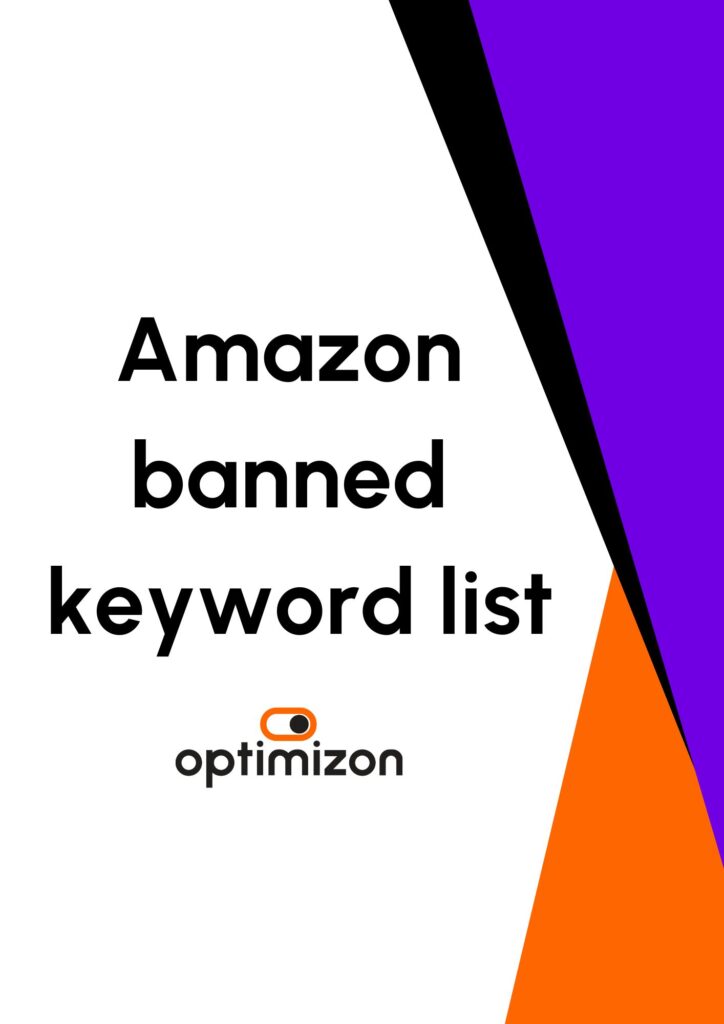Elevating your brand on Amazon is a strategic move, and diving into the intricacies of Fulfilled by Amazon (FBA) can be a game-changer. A crucial aspect of this journey lies in understanding and adhering to Amazon’s packaging requirements. In this comprehensive guide, we’ll unravel the essentials of FBA, covering packaging guidelines, labeling prerequisites, and shipping considerations.
Decoding FBA Choices: FBM vs. FBA
Amazon presents two fulfilment options, each with distinct packaging demands:
FBM (Fulfilled by Merchant): Sellers manage the entire process, from order to shipping. While packaging rules are less rigid, meeting Amazon’s customer expectations is paramount.
FBA (Fulfilled by Amazon): Opting for FBA means entrusting Amazons warehouses with order processing, picking, packing, and shipping. This option is renowned for its speed, convenience and grants access to Amazon Prime customers.
Here’s a quick overview of what FBA and FBM include:
| Fufilled by Amazon – FBA | Fufilled by Merchant – FBM |
Prime Shipping | Automatically Eligible | Only through SFP |
Buy Box Advantage | Yes | No |
Customer Service | Amazon is responsible | Seller is responsible |
Refunds & Returns | Amazon is responsible | Seller is responsible |
Performance Metrics Relate To Order (on-time delivery, order cancellation) | Amazon is responsible | Seller is responsible |
Inventory Control | No control | Total control |
Inbound Packaging & Labelling Requirements | Very strict requirements | Depends on the seller |
Optimizing Amazon FBA Packaging for Individual Goods
Ensuring compliance with Amazon’s stringent packaging guidelines is essential for a seamless FBA experience. Here’s a breakdown of the key packaging requirements for individual goods:
- Packaging Uniformity:
– All individual SKU items must be consolidated within the same packaging.
– For multi-set products, like book or DVD sets, each set must be packaged as a single unit.
– Amazon does not accept items requiring assembly of multiple separate pieces, such as the example of a wheelbarrow with handles and legs in different boxes.
- Shippable Unit Definition:
– Each shippable unit, referring to items sent to customers, must bear a visible barcode.
– In the case of gift sets, the entire set constitutes a shippable unit. But when selling items separately, each item is considered a distinct shippable unit.
- Additional Protection for Hazardous Goods:
– Goods categorised as sharp, hazardous, or prone to damage require extra protective packaging.
– This measure ensures Amazon can fulfill services safely, preventing damage to your goods during the process.
- Transparent Poly Bags for Sensitivity:
– Products sensitive to dust, dirt, or humidity require safeguarding through transparent poly bags.
– Amazon may reject inadequately packaged breakable or dangerous goods, potentially incurring non-compliance fees or necessitating repackaging at the seller’s expense.
- Individual Packaging for Shock-Sensitive Products:
– Shock-sensitive items, like hard drives, must be individually protected using materials such as bubble wrap.
– Each unit within a shipment, especially for shock-sensitive products, must undergo individual protective packaging to mitigate the risk of damage during handling and transit.
What happens if my amazon package is deemed insufficient?
Amazon reserves the right to assess the adequacy of packaging, particularly for breakable or dangerous items. In instances where the packaging is deemed insufficient, products may be rejected or repackaged at the seller’s cost. Non-compliance fees may also be imposed to underscore the importance of adherence to packaging guidelines.
By meticulously following these packaging protocols, sellers can enhance the safety of their products, reduce the likelihood of rejections or additional fees, and contribute to a positive customer experience within the Amazon FBA ecosystem.
Critical FBA Labelling Guidelines
Ensuring the accurate labelling of your cartons is paramount for a smooth Amazon FBA shipment process. Follow these guidelines to enhance the visibility and scan-ability of labels:
- Flat Surface Placement:
– Position the label on a flat surface to ensure optimal scanning. Labels around corners or curves may impede the scanning process.
- Exclusive Barcode Visibility:
– Cover all barcodes, except your own, to prevent interference during warehouse reception. Multiple visible barcodes can lead to confusion and the potential loss of goods.
- High-Quality Printing:
– Print labels in high resolution to prevent smearing or fading. Laser jet printers are recommended for achieving the best quality prints, ensuring the longevity of the labels.
Labelling Cartons on Seller Central:
When booking a shipment on Seller Central, Amazon will generate labels for both pallets and individual cartons. For efficiency:
- Outsource Carton Labeling to Suppliers: Consider having your suppliers label the cartons, as they possess knowledge about the contents of each box.
- Weight Limitations and Heavy Package Marking:
- Each carton on the pallet should not exceed 23 kg to comply with Amazon’s regulations.
- For individual cartons weighing between 15 kg and 23 kg, prominently mark them as “Heavy Package.” This marking should be visible from both the top and sides of each heavy-weight container.
By adhering to these labelling guidelines, you ensure that your products are accurately identified, reducing the risk of errors in inventory management and contributing to the overall efficiency of the Amazon FBA process.
Barcodes: Manufacturers vs. Amazon (FNSKU)
Barcodes are the backbone of Amazon’s inventory tracking. Sellers can utilise manufacturer barcodes (e.g., UPC) or Amazon barcodes (FNSKU). Opting for FNSKU ensures precise association of your units with your seller account, preventing merging with other sellers’ inventory.
FNSKU Barcode Application
– Apply FNSKU barcodes to products lacking manufacturer barcodes.
– Choose between printing labels during FBA shipment creation, having suppliers apply them, or opting for Amazon’s labelling service for a fee.
– Obtain a GTIN Exemption in Seller Central for products without manufacturer barcodes.
General Amazon Packaging Guidelines
Amazon’s overarching packaging guidelines include:
– Unique FNSKU for each product.
– Exterior scannable barcode or label on each unit.
– Ensure the cover or obfuscation of any existing barcodes on shipping boxes.
Product-Specific Packaging Protocols
Loose Products:
– Single, secure packaging for units.
– Proper packaging for footwear and clothing.
Poly-Bagged Units:
– Suffocation warning on poly bags.
– Transparent and scannable barcode required.
Sold as Set:
– Clearly mark set packaging.
– Unique FNSKU barcode for bundled sets.
Boxed Units:
– Six-sided, robust boxes.
– Perforated sides must pass a 3-foot drop test.
Bubble Wrap:
– Utilise bubble wrap for fragile or heavy items.
– Must pass a 3-foot drop test when securely wrapped.
Inbound Shipping to Amazon FBA
Prepare units for shipment to Amazon fulfilment centres by:
– Providing box content information during the FBA shipment process.
– Utilising rigid, six-sided boxes with intact flaps.
– Applying a unique FBA Box ID label to each box.
– Removing old labels and markings on reused boxes.
Packaging Materials and Limitations
What materials can be used for Amazon packaging:
Permitted materials on Amazon include bubble wrap, full sheets of paper, inflatable air pillows and polyethylene foam sheeting.
What materials are prohibited to be used for Amazon packaging:
Prohibited Materials for Amazon packing include packing peanuts, foam strips, crinkle wrap, shredded paper and styrofoam.
Shipping and Labelling Procedures
Shipping Methods include SPDs (Small parcel deliveries) for individual boxes and LTL/LFL (Less Than Truckload/Full Truckload) for pallets.
Labelling Specifications:
– Employ a complete set of 3 1/3 x 4 inches labels.
– Apply labels on flat surfaces for optimal scan ability.
– Assign each box its FBA box ID label.
– Pallets necessitate four pallet labels.
Procuring Amazon Packaging Supplies
Efficiently handling FBA shipments requires quality packaging supplies. Consider the following:
– Order from Amazon for a hassle-free solution.
– Standard box types include Regular Slotted Carton (RSC) and B flute.
– Leverage free shipping labels from Amazon’s partnered carriers such as UPS.
– Explore local stores such as B&Q or Homebase in the UK or Home Depot in the USA for heavy-duty shipping boxes.
FBA Order Fulfilment Options
Whether opting for FBM or FBA, comprehending associated packaging and labelling requirements is vital. FBA provides added conveniences, such as Amazon’s labelling service or the FBA Prep Service.
What is the Amazon FBA Prep Service?
Signing up to Amazon FBA Prep Services lets Amazon handle preparation and packaging for a fee. This is ideal for sellers unable to package items independently or those opting for direct supplier-to-Amazon delivery.
Optimal Pallet Packaging for Amazon FBA
Efficient pallet packaging is crucial for a seamless Amazon FBA experience. Follow these comprehensive guidelines to ensure compliance:
- Labelling Requirements:
Each pallet should feature essential information on the upper right corner, including Vendor Name, To and From addresses, PO numbers, Number of cartons, and Pallet #____ of _____ pallets.
- Like-Item Palletisation:
Whenever possible, pallets should consist of like items. For mixed but visually similar products, clearly label the pallet as “mixed merchandise” or “mixed SKUs” (e.g., similar-looking cartons of regular and wide-screen DVD editions).
- Stretch-Wrapping Protocols:
Use clear plastic stretch-wrap for all pallets, with a conspicuous “do not break stretch-wrap” or “do not break down” notification to the carrier. Pallets wrapped in black/opaque stretch-wrap may face rejection.
- Pallet Specifications:
Employ standard four-way access pallets measuring 1,200 mm x 1,000 mm. Avoid broken or damaged pallets, as they may be rejected at the merchant’s expense.
- Height and Weight Limits:
For single pallets, ensure that the height does not exceed 1.8 m, including the pallet’s height. The total weight of a pallet must not surpass 500 kg.
- Overhang Limitations:
Merchandise should not extend beyond the pallet edge by more than 25 mm.
By adhering to these guidelines, you guarantee that your pallets meet Amazon’s stringent requirements, minimising the risk of rejection and contributing to a streamlined and efficient FBA process.
Shipping products to Amazon need not be overwhelming. Adhering to Amazon’s FBA packaging and prep requirements enhances your chances of success. Whether managing packaging in-house or utilising Amazon’s services, staying informed about evolving policies ensures a seamless FBA experience.
As Amazon’s landscape evolves, keeping ahead of changes and adapting your packaging strategy accordingly will contribute to a thriving and enduring presence on this e-commerce giant. Or if you want help in handling all of this for you, contact us today!
Amazons guide to packaging pallets: https://sellercentral.amazon.co.uk/help/hub/reference/external/200280270?ref=efph_200280270_cont_201021880&locale=en-GB





